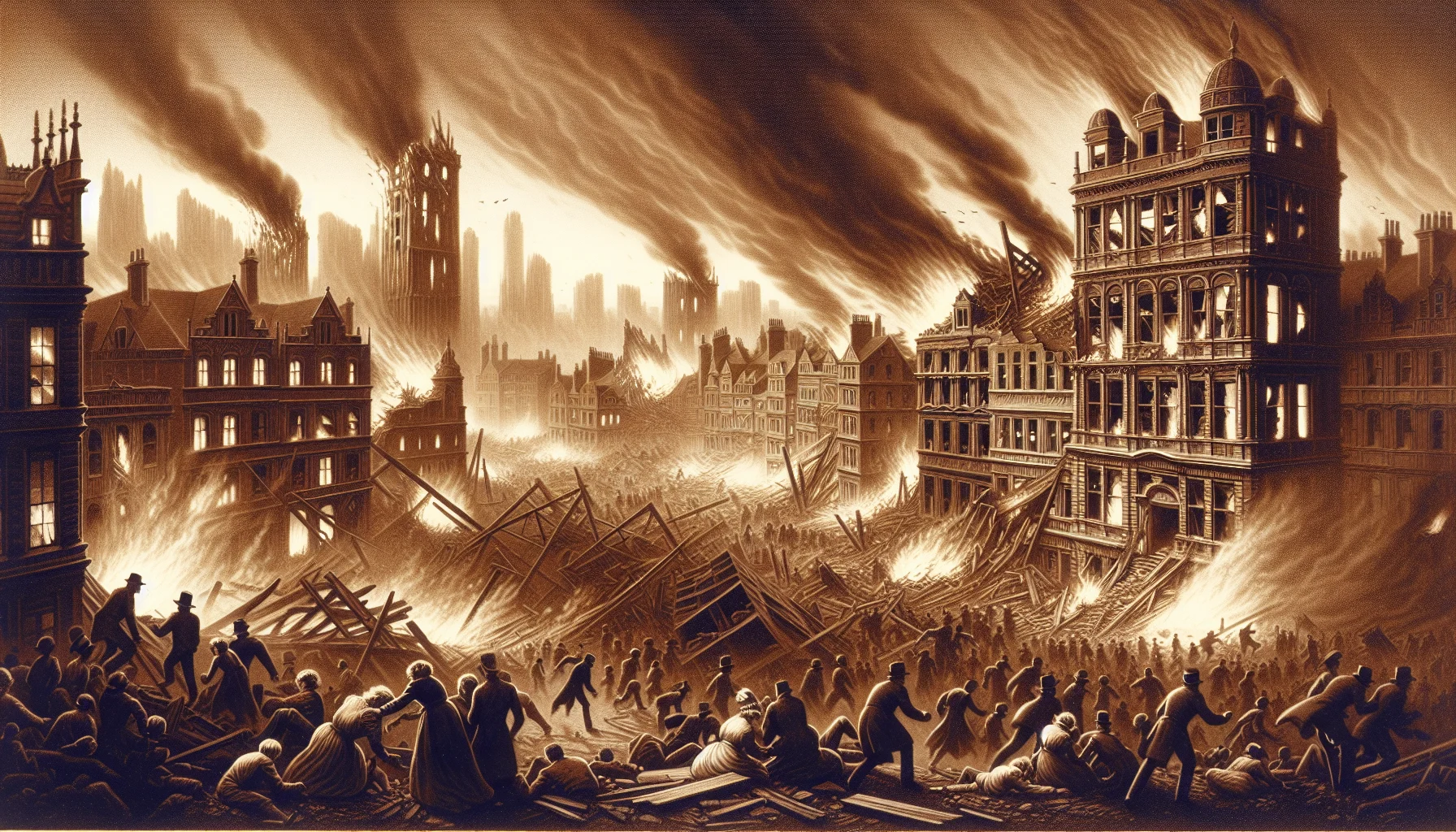
The 1906 San Francisco Earthquake
by: The Calamity Calendar Team
April 18, 1906
Dawn of Devastation
In the early, still-dark hours of April 18, 1906, San Francisco's slumbering metropolis was jolted into chaos. This city by the bay, a bustling hub for commerce and culture, found itself at the epicenter of one of the most catastrophic natural disasters of the 20th century. Residents were shaken awake at precisely 5:12 AM as the earth beneath them heaved violently. For a haunting 45 to 60 seconds, the city quaked with a fury estimated at a magnitude of 7.9. This was no ordinary tremor; it was a seismic force that emanated from the infamous San Andreas Fault, sending shockwaves far beyond San Francisco's borders.
The Heartbeat of a Growing City
At the time, San Francisco was a city on the rise, home to approximately 400,000 souls. Its streets were lined with charming yet vulnerable wooden buildings and ornate Victorian homes. It was a city of contrasts — where opulence met the raw, untamed beauty of the West. But beneath its charm lay the perilous truth of being positioned on a tectonic battlefield.
The city had long been aware of its volatile geological setting, but few had imagined the magnitude of havoc such an event could precipitate. As the ground reverberated, wooden frames groaned and masonry crumbled. Roads split open, and communication lines snapped, isolating a city on the verge of catastrophe.
The Shifting Earth and Birth of Inferno
As morning light began to spill over the horizon, San Francisco's citizens confronted a landscape vastly altered and eerily ominous. Buildings lay like toppled toys, their once-stalwart facades now mere rubble. Yet, it wasn't just the initial quake that wreaked the most havoc; it was the fires that followed, ignited by ruptured gas lines and electrical failures.
As the sun rose higher, the infernos spread, unchecked and ravenous. Firefighters, those unflagging heroes, found themselves tragically hamstrung. The earthquake had not just wiped out buildings; it had decimated essential infrastructure, including the city's water supply. Hydrants were dry; hoses lay useless against the advancing flames.
In desperation, city officials turned to a drastic measure — dynamite. Streets erupted once more, not from the earth's wrath but from controlled explosions aimed at creating firebreaks. Yet, in a cruel twist, these desperate strategies occasionally fanned the flames instead.
Thanks for subscribing!
The Aftermath: A City Laid Bare
When the fires finally surrendered after three harrowing days, they left behind a smoldering scar that cut through San Francisco's heart. Approximately 3,000 people had perished in the catastrophe, while more than 225,000 were rendered homeless. Whole sections of the city were razed; more than 28,000 buildings now existed only in memories.
The staggering economic cost of the disaster was estimated at $400 million at the time, a sum equivalent to approximately $13.9 billion today. But beyond the financial ledger, the emotional and psychological toll of losing a city, its landmarks, and countless lives was incalculable.
Rising from the Ashes
The response to this monumental tragedy was swift and multifaceted. In the immediate aftermath, military troops entered the fray, not with weapons but with carts of supplies and the authority to maintain order. Makeshift field hospitals and refugee camps sprang up, providing solace to those suddenly adrift and homeless. The city resembled an enormous encampment, with tents stretching across parks and abandoned lots.
Reconstruction was imperative, yet the path forward was neither simple nor swift. While Daniel Burnham had laid out grand visions for urban renewal in 1905, practical rebuilding efforts were local, driven by necessity rather than utopic design. The imperative was clear: San Francisco needed to be safer, stronger, and more prepared.
Building codes were reevaluated and fortified; structures evolved to stand in defiance of nature's whims. Seismology emerged as a priority, as scientists sought to understand the forces that had turned a thriving city into ruin.
Lessons Learned and Lasting Legacy
Today's San Francisco bears testimony to the lessons learned in tragedy's wake. Advances in seismology and engineering have rendered the city more resilient, its structures resolute against the tremors foreseen by science and experience. Modern building codes owe much to the foundations laid in the aftermath of 1906, guided by a determination never to repeat that day’s devastation.
The 1906 earthquake remains etched in history, a reminder of nature's unpredictable power and the enduring spirit of those who rebuild. San Francisco, with its undeterred resolve, rose from the ashes, stronger and wiser, standing as both a symbol of human vulnerability and resilience in the face of even the most formidable adversities.
Stay in the Loop!
Become a Calamity Insider and get exclusive Calamity Calendar updates delivered straight to your inbox.
Thanks! You're now subscribed.